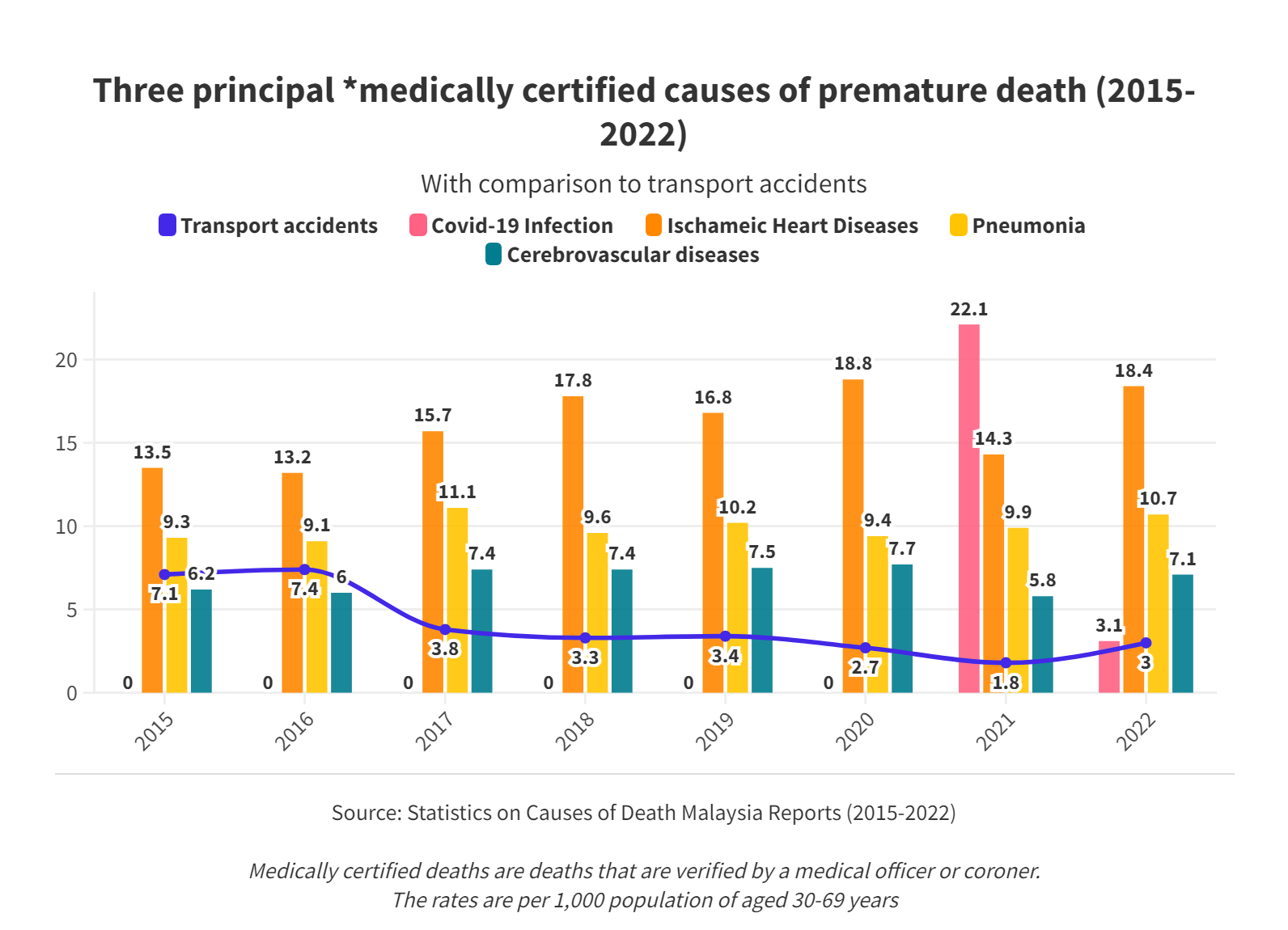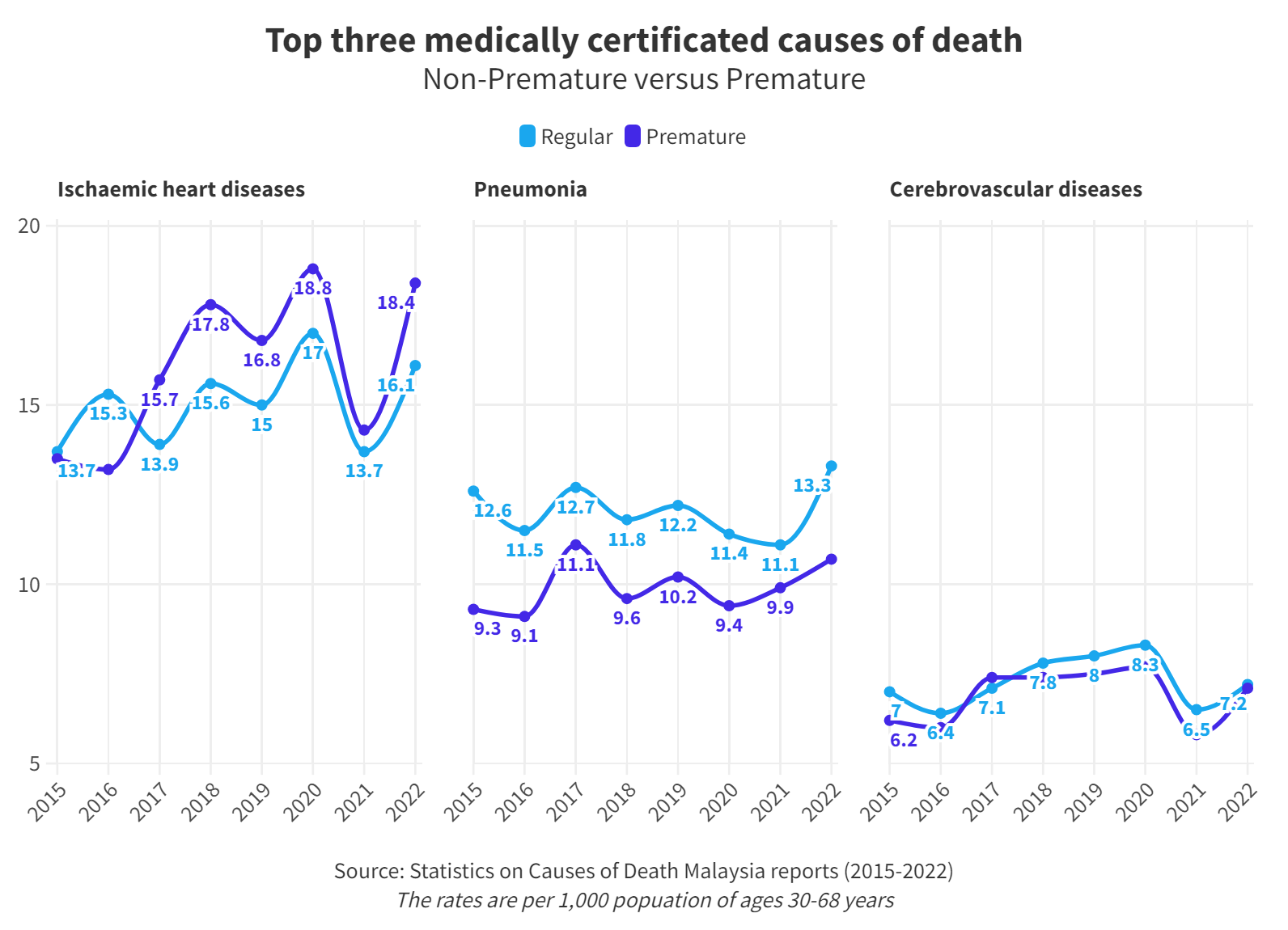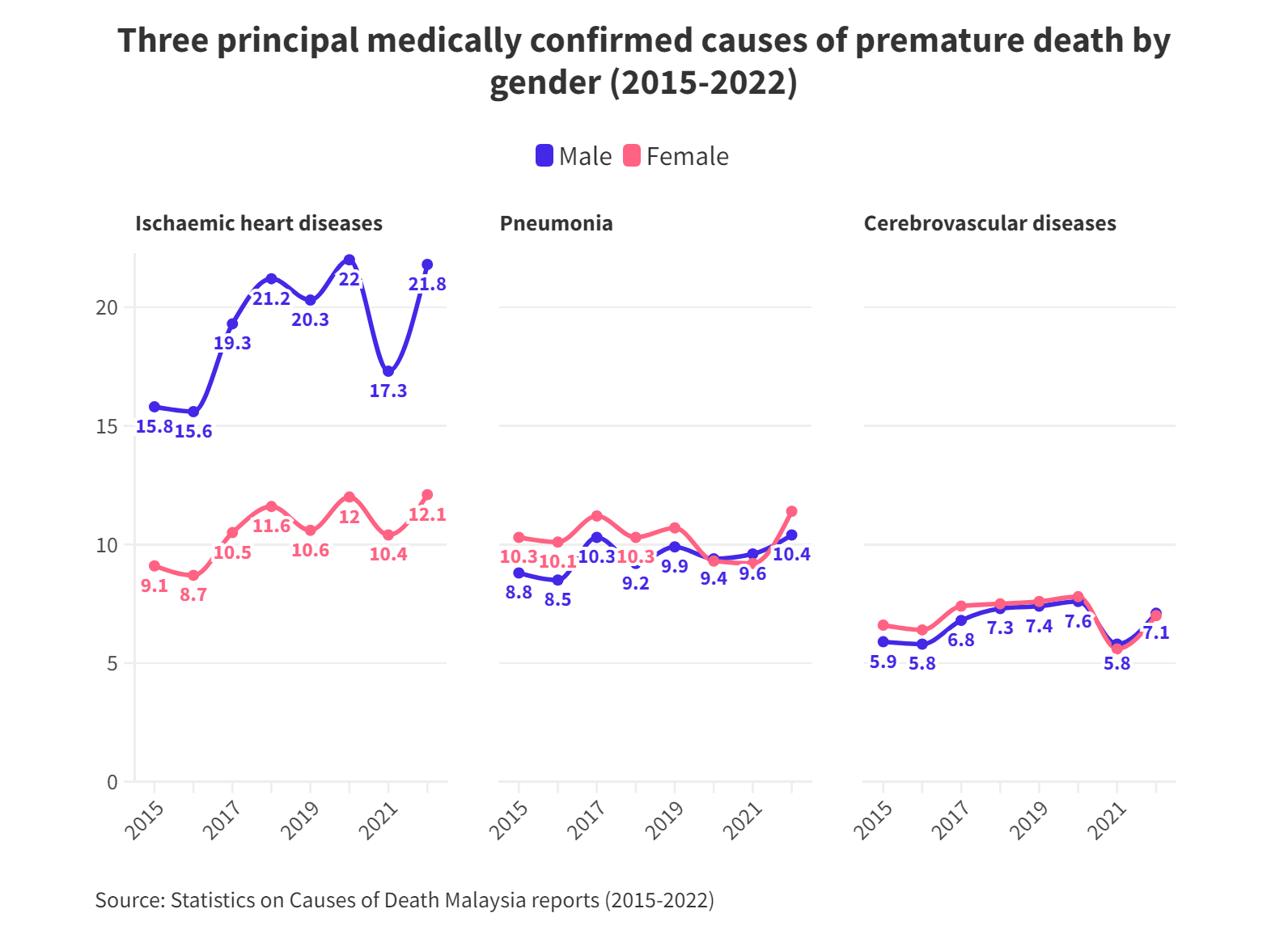
PETALING JAYA: Almost a quarter of the country’s premature deaths in 2022 were caused by non-communicable diseases (NCDs), statistics show.
A staggering 95,266 deaths were recorded among adults aged between 30 and 69, below the national average life expectancy of approximately 75.
FMT takes a look at pre-mortality data between 2015 and 2022 and the types of NCDs that brought about these premature deaths.
NCDs in numbers

An examination of mortality data has revealed that heart and cerebrovascular diseases and pneumonia have been the main culprits behind premature deaths over the past seven years.
While there has been no significant rise in fatalities linked to these three health issues, the numbers have remained relatively high.
Even during the height of the pandemic, these NCDs continued to be major causes of death, second only to Covid-19.
In 2015 and 2016, young adults were more likely to die from NCDs than from road accidents.

An analysis of the mortality rates in each of the top three NCDs shows a significantly high rate of premature deaths.
In fact, the number of young adults succumbing to heart diseases has seen a gradual increase since 2016.

Although the causes of premature death between the two genders showed minimal differences, the biggest killer for males has consistently been heart disease, rendering them almost twice as likely to succumb to the ailment than females.
Why more people are getting NCDs
Dr Moy Foong Ming of Universiti Malaya’s faculty of medicine said no progress appeared to have been made in addressing NCDs, as the incidence of premature deaths had remained relatively high over the past seven years.
Moy said two of the top three NCDs contributing to early deaths – heart disease and cerebrovascular disease – are closely linked to lifestyle choices.
“As we all know from the National Health and Morbidity Survey (NHMS) results, the rate of obesity is increasing, along with diabetes and hypertension,” she said.
“So, all these lifestyle-related risk factors will contribute to the higher risk for ischemic heart disease and other NCDs.”

According to the 2019 NHMS, obesity rose over a period of eight years from 15.1% to 19.7%, while diabetes surged from 11.2% to 18.3%. Only hypertension showed a slight decrease.
The same survey found that one in four adults in the country is not physically active.
What needs to be done
Moy warned that the healthcare system would be burdened if Malaysia’s prevalence of NCDs persists or worsens, which would in turn affect the national economy.
“When you have more patients, the government will need to provide more facilities to treat the additional patients,” she said.
“If our people develop these diseases while they are still at a productive working age, then it will reduce productivity at the place where they are working, and of the country.”
Malaysia presently spends almost RM10 billion on treating NCDs, taking up 16.8% of the total healthcare expenditure.
With good healthcare services and treatment readily available, Moy said the responsibility of proactively addressing and improving their lifestyles falls on each individual.
“(For example), if they’re obese, they should (find ways to) reduce weight and so on. Get physically active. If they don’t do that, they will have all the risk factors and be more predisposed to getting these NCDs.”
Moy also said that the local government development ministry can play a role in preventing NCDs.
“So when developing a city, the housing (areas), considerations such as the availability of green spaces and parks are vital for the residents to engage in regular exercise,” she said.
She said individuals could also draw encouragement from their surrounding environment to adopt a healthier lifestyle. - FMT
No comments:
Post a Comment
Note: Only a member of this blog may post a comment.